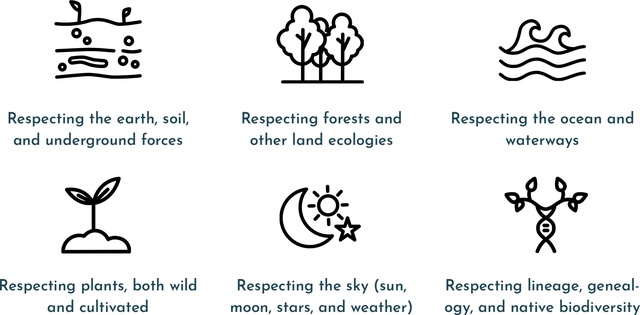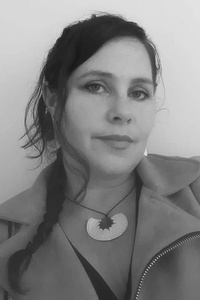Innovative urban resilience in Moananui Oceania
The NUWAO (Nature-based Urban Design for Wellbeing and Adaptation in Oceania) project, focuses on urban design driven by Indigenous knowledges to address climate adaptation and community well-being. The multi-disciplinary NUWAO team is led out of Te Wānanga Aronui o Tāmaki Makau Rau Auckland University of Technology’s School of Future Environments. NUWAO consists of Indigenous and non-Indigenous researchers and designers from Aotearoa New Zealand, Samoa, Vanuatu, Kiribati, and New Caledonia, representing disciplines such as ecology, architecture, landscape design, and international development.
Nature-based solutions

Communities across Moananui Oceania face increasing challenges. As the impacts of climate change become more acute and biodiversity continues to decline, the need for rapid transformation in towns and cities is urgent. Given that most people now live in urban environments, this is where much of humanity’s adaptation to these challenges must take place.
The ‘Nature-based’ approach integrates design with nature more effectively in cities. This involves adding more vegetation in, on, and around buildings, and increasing urban green and blue infrastructure.
The term ‘Nature-based Solutions’ (NbS) — first coined in the early 2000s — is defined by the United Nations as “Actions to protect, conserve, restore, sustainably use and manage natural or modified terrestrial, freshwater, coastal and marine ecosystems, which address social, economic and environmental challenges effectively and adaptively, while simultaneously providing human well-being, ecosystem services and resilience and biodiversity benefits”. A key component of this definition for NUWAO is the dual purpose of NbS; to increase the well-being of people and ecosystems at the same time.

Nature-based Solutions Design Guide for Moananui Oceania
NUWAO has been working on devising and recognising NbS suitable for the Aotearoa and wider Moananui Oceania context through participatory mapping and fieldwork, an international symposium and design competition, and various academic and other publications such as the NUWAO podcast series. One of the culminations of this work is the online Nature-based Solutions (NbS) Design Guide for Te Moananui Oceania recently launched at the 4th Pacific Climate Change Conference (POPCCC) in Apia.
The guide focuses on improving urban resilience and human and ecological wellbeing in the region by detailing 100 NbS paired with local case studies. It is aimed at urban designers and planners, architects and landscape architects, policymakers, and other professionals and decision-makers of the built environment.
People ca search for NbS in the guide that can address specific climate change impacts such as sea level rise, flooding, or temperature increase, or that can address societal issues like water and food security. People can also search for NbS by tapping into what is termed in the guide ‘interconnected living ecologies’.

Moananui, of which Aotearoa is a part, is of course very diverse, but being able to search for NbS in this way prioritises respecting the living world akin to generalised Indigenous understandings of how to live well within dynamic ecological and climatic conditions in the region.
The intention is to understand how NbS can be a means to work with, celebrate, or strengthen mauri (life force), vā (relational space) and related concepts, and centres an Indigenous way of framing relationships to the living world and working with nature for increased collective wellbeing.
The NUWAO NbS guide takes a ‘ridge to reef’ or ‘ki uta ki tai’ approach acknowledging that cities are part of wider watersheds, and in Moananui Oceania, are often near the ocean. Examples in the guide include internationally well known NbS such as green roofs and walls, swales, and constructed wetlands and reefs, as well as ways of working with nature that are drawn from both traditional and contemporary Indigenous knowledge. Examples include coastal erosion prevention strategies such as te buibui (Kiribati), weed management concepts such as ūwhi (Aotearoa), and land management systems such as ahupua’a (Hawai’i), tapere (Cook Islands), and pākainga (Aotearoa).
By utilising NbS that are rooted in local cultures, climates, and ecosystems, communities can enhance resilience to climate change while improving the quality of urban life. The NbS strategies outlined in the NUWAO NbS guide offer inspiration for designing and retrofitting buildings, towns, and cities that honour cultural values and strengthen local ecosystems and communities while becoming more able to adapt to climate change.
Access to the free online NUWAO NbS guide, along with further details about the NUWAO project, the team, and other publications can be found on www.nuwao.org.nz.

A call to make cities better
Innovative, nature-based, and vegetation-integrated urban and architectural design presents a bold vision for future cities, reducing climate change drivers, adapting to its impacts, and improving biodiversity and ecosystem health. Some cities, such as Singapore and Melbourne, are already moving towards this vision through policy and implementation.
Nature-based design, both in a technological and worldview sense, is not new. Indigenous communities have long developed ways of working with nature that enhance resilience, biodiversity, and sustainability. Nature-based design must expand to include dialogue and exploration about what it means to work with nature and how such design can help repair and redefine human-nature relationships, especially in the context of Aotearoa New Zealand and the wider Moananui Oceania region.
Working with a river in Germany will be quite different than working with a river in Aotearoa New Zealand for example, where that river may be an ancestor. NbS must be tailored to local worldviews to be more effective and to avoid inadvertently imposing approaches that undermine cultural contexts as climate adaptation efforts intensify.

To conclude, effective design and implementation of NbS in Moananui Oceania should:
- Promote long-term resilience and regeneration and understand the interconnectedness of socio-ecological systems.
- Be driven by an understanding of local Indigenous cultures, knowledges, and values.
- Be based on local wellbeing paradigms and not solely on Western science understandings or measurements of climate change or ecological health.
- Ensure equitable and just outcomes for local communities, and work to provide co-benefits that address social, economic, and environmental justice issues alongside responding to climate concerns.
- Recognise and prioritise Indigenous leadership and decision-making, and local hierarchies of power and decision-making. Indigenous peoples should be partners, not merely stakeholders. NbS should be led by and/or co-designed with local communities.
- Be teamed by proponents who understand the political nature of climate change actions and become advocates for system change.

The benefits of urban vegetation and blue infrastructure are well-documented. Incorporating more nature into urban environments can help reduce urban heat islands, improve air quality, manage flooding and stormwater, and provide critical habitat for urban wildlife. NbS can also support human health, build social cohesion, and offer recreation opportunities. What is needed is a rapid scaling up and rethinking of how we integrate nature into cities, making it a key part of the urban fabric rather than just decoration. This approach sees cities and their people as embedded within the natural systems they affect, not separate from them.
NUWAO’s NbS Design Guide supports the transformation of cities into regenerative systems that actively support biodiversity, ecological health, and human well-being by harnessing living socio-ecological urban systems as a means to adapt to the impacts of climate change.
NUWAO is funded up until 2024 through a Royal Society of New Zealand Marsden Grant.









